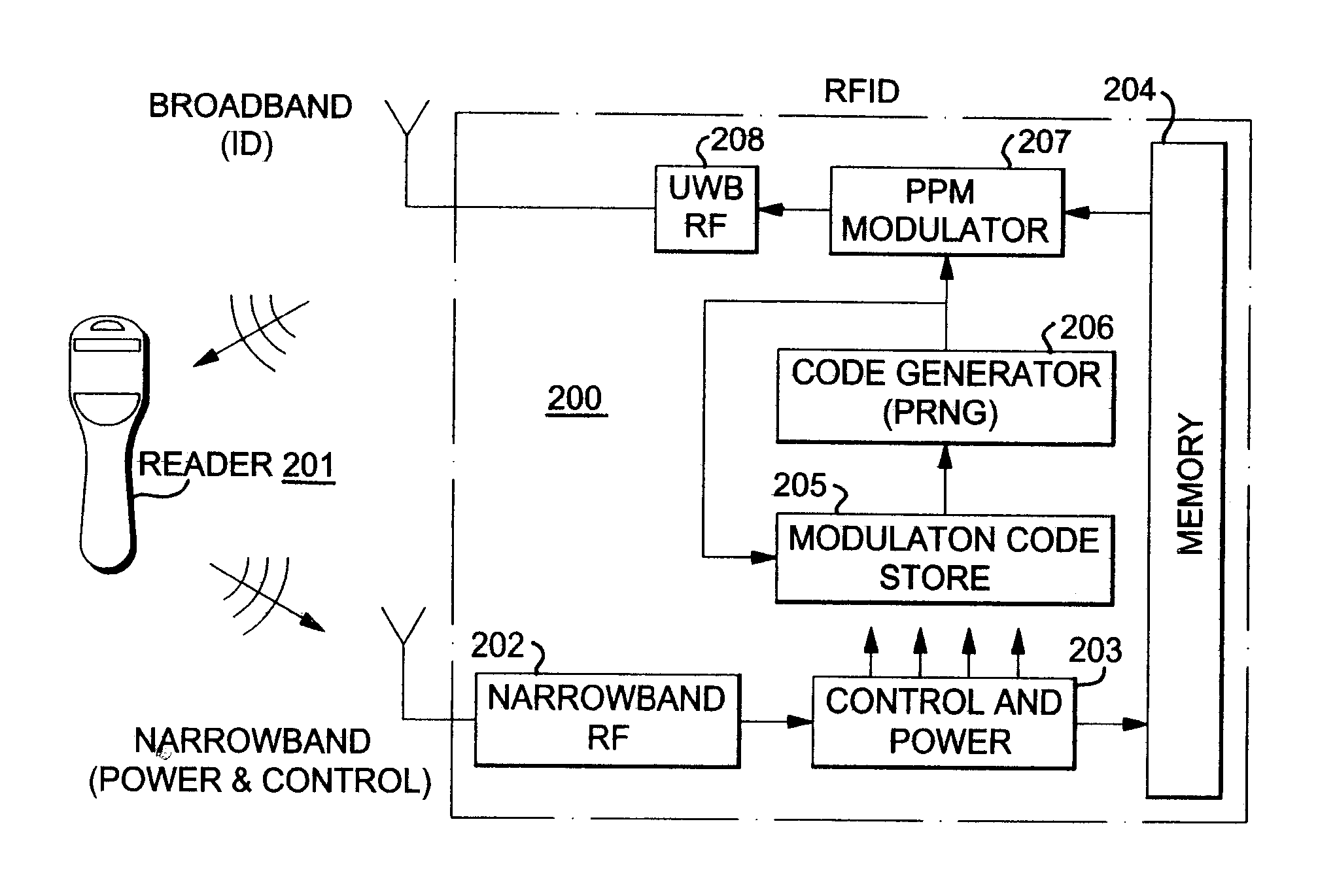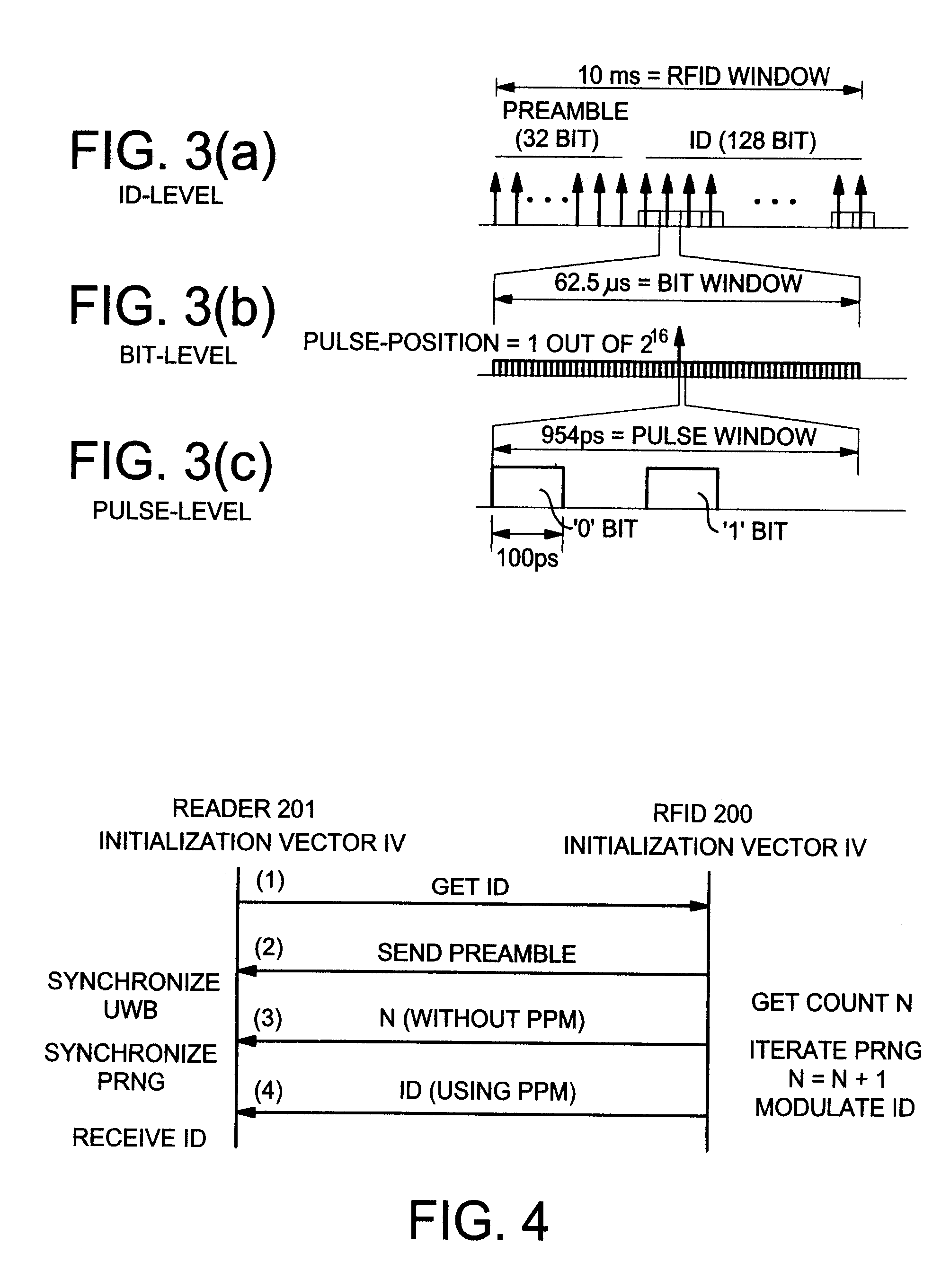Secure RFID based ultra-wideband time-hopped pulse-position modulation
a technology of ultra-wideband time-hopping pulse position, which is applied in the field of active and passive communication systems, can solve the problems of high power dissipation complex hardware, etc., and achieves simple coding and modulation schemes, easy eavesdropping or jamming, and high power dissipation
- Summary
- Abstract
- Description
- Claims
- Application Information
AI Technical Summary
Benefits of technology
Problems solved by technology
Method used
Image
Examples
Embodiment Construction
[0018] A preferred embodiment of the present invention will be set forth in detail with reference to the drawings, in which like reference numerals refer to like elements or operational steps throughout.
[0019] Since the Federal Communications Commission's (FCC's) allocation of a UWB spectrum in the range of 3.1 GHz to 10.6 GHz in 2002, UWB has gained phenomenal interest in academia and industry. Compared to traditional narrowband communication systems, UWB has several advantages including high data-rate, low average radiated power, and simple RF circuitry. Many of these potential advantages are a direct consequence of UWB's large instantaneous bandwidth. Shannon's theorem states that the channel capacity C is given as B log2(1+SNR), where B is the bandwidth and SNR is the signal-to-noise ratio, as discussed in J. G. Proakis, Digital Communications, McGraw-Hill, 1995. As the bandwidth B is much larger (on the order of several GHz) for UWB than for a narrowband signal, the SNR can be...
PUM
 Login to View More
Login to View More Abstract
Description
Claims
Application Information
 Login to View More
Login to View More - R&D
- Intellectual Property
- Life Sciences
- Materials
- Tech Scout
- Unparalleled Data Quality
- Higher Quality Content
- 60% Fewer Hallucinations
Browse by: Latest US Patents, China's latest patents, Technical Efficacy Thesaurus, Application Domain, Technology Topic, Popular Technical Reports.
© 2025 PatSnap. All rights reserved.Legal|Privacy policy|Modern Slavery Act Transparency Statement|Sitemap|About US| Contact US: help@patsnap.com



